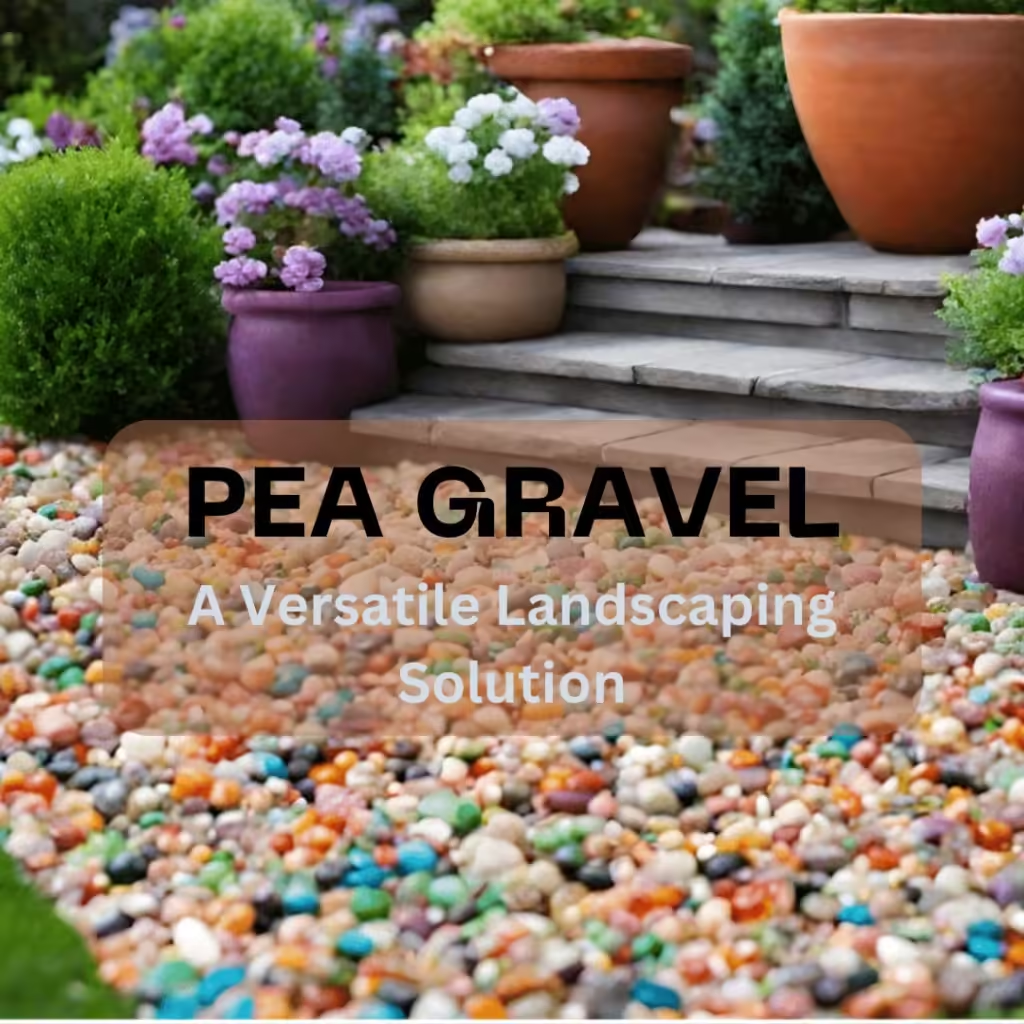Hence the name, pea gravel is made up of small, smooth, round stones typically around the size of pea. Pea stones come in many colors including gray, white, beige, and brown. Its smooth texture results from natural weathering, usually occurring in rivers or streams. Pea pebbles are commonly used in landscaping projects, ranging from pathways to patios, due to their versatile appearance.
Uses of Pea Gravel
They are famous choice for several landscaping purposes, including:
Walkways and Pathways:
Pea pebble’s smooth texture provides a comfortable walking surface, making it an ideal choice for pathways and walkways. It prevents mud and erosion. The rounded stones create a pleasant feel underfoot, allowing for easy navigation. They are not only functional but also aesthetically appealing, making them a great choice for enhancing outdoor spaces.
Driveways:
They are cost-effective and visually appealing choices for driveways. It requires minimum maintenance as compared to other driveway materials. With a variety of colors available, they add charm and character to your outdoor space while remaining budget-friendly.
Patios:
Its natural appearance adds relaxed and rustic charms to outdoor living spaces. The smooth texture allows a perfect atmosphere for simply enjoying a quiet evening outdoors. Pea gravel enhances the overall ambiance, making it a perfect choice for patios.
Garden Beds:
Pea stones play a key role in retaining soil moisture, as it is frequently used as mulch in garden beds. They form a protective layer over the soil, which helps reduce evaporation and provides consistent moisture for plants to thrive. Additionally, they effectively prevent weed growth by creating a barrier that makes it harder for weeds to grow themselves. It not only reduces maintenance efforts but also allows your plants to flourish without competition for nutrients.
Drainage Solutions:
Due to their small size, they are used to improve drainage systems, facilitating easy water flow. This drainage solution allows excess water to pass through quickly, reducing the risk of pooling and ensuring that the surrounding soil remains stable.
Pea Gravel: Pros and Cons
Like any material, pea gravel has its advantages and drawbacks.
Pros:
- Affordable: It is inexpensive compared to other patio or landscaping materials. It is an affordable option for landscaping and construction projects.
- Easy Installation: They are lightweight, making it easy to transport and spread.
- Good Drainage: It allows water to flow through, providing an excellent choice for areas prone to pooling or heavy rainfall.
- Aesthetic Variety: They are available in various colors, providing flexibility in design and enhancing aesthetical appeal.
- Soft Underfoot: Its smooth surface makes it comfortable to walk on, especially for kids and pets, and minimizes erosion.
Cons:
- Shifting: It can move out of place, especially on sloped surfaces, requiring periodic adjustments. They can be displaced easily by foot traffic or heavy rain.
- Weed Growth: Despite its use as mulch, weeds can still grow through pea gravel if not properly installed.
- Not Ideal for Stability: Furniture placed on pea gravel can be unstable because the surface shifts underweight.
- Difficult to Clear Snow: It can be difficult to shovel snow off pea gravel surfaces without displacing the stones.
Maintenance and Repair
Maintaining pea stones is simple but requires regular attention:
- Raking: Over time, pea pebbles can spread out of place. Raking it back into position helps maintain an even surface, especially in high-traffic areas.
- Weed Control: Laying landscaping fabric underneath pea gravel can reduce weed growth, regularly check for weeds and remove them promptly.
- Refilling: Over time, some pea gravel may wash away or settle. Periodically add more gravel to maintain the desired depth and coverage.
- Compaction: If the gravel becomes loose or uneven, lightly compacting it can help stabilize the area.
- Cleaning: Occasionally wash or spray the area with water to keep it clean and visually appealing. In dry conditions, dust may accumulate on the surface.
- Draining Issues: If you notice pooling, make sure that the drainage systems are working properly and adjust the gravel layer as needed to promote better water flow.
How to Install a Pea Gravel Patio
Here is a simple guide on how to install them on the patio.
Prepare the Ground
Start by clearing the area of any debris, grass, or plants to create a clean workspace. Next, level the ground to create a stable and even base for the installation of the pea stones.
Add Base Material
Pea Gravel Patio vs. Crushed Gravel Patio
Both pea gravel and crushed gravel are common options for patios, but they have key differences:
Appearance
Pea gravel provides a softer aesthetic with its smooth and rounded texture. In contrast, crushed gravel has sharper edges, resulting in a more rugged look.
Cost
Both materials are affordable, but pea gravel may be slightly more expensive depending on the source and region.
FAQs
How much pea gravel do I need?
How much does a yard of pea gravel weigh?
A cubic yard of pea gravel generally weighs around 2,800 pounds (or 1.4 tons). However, the weight can vary depending on the type of stone used and its moisture content.
Why should you not use pea gravel?



